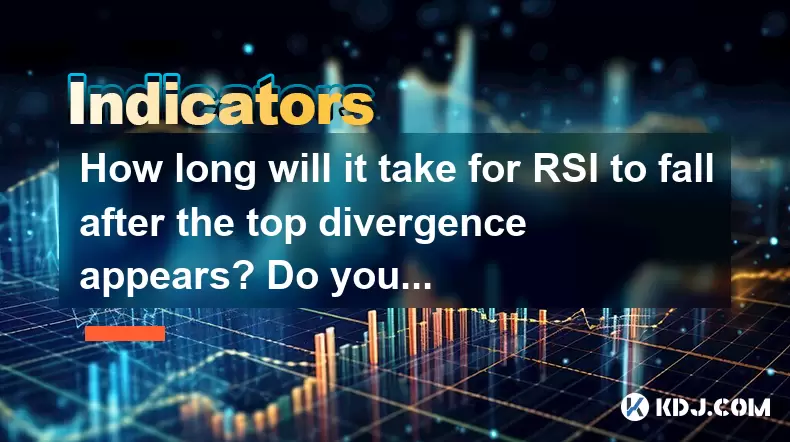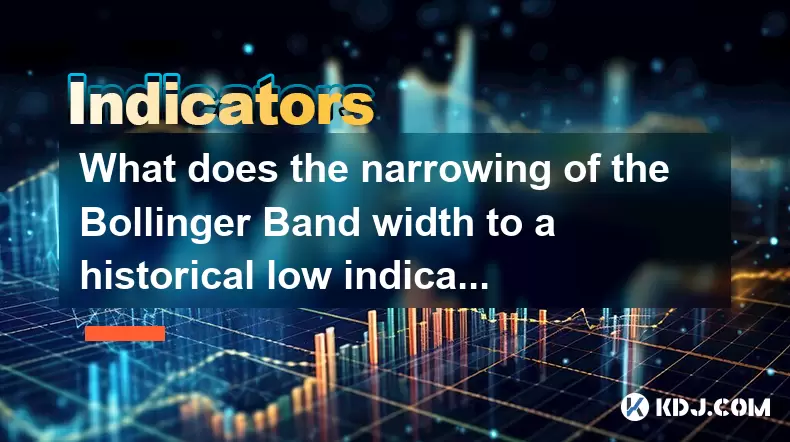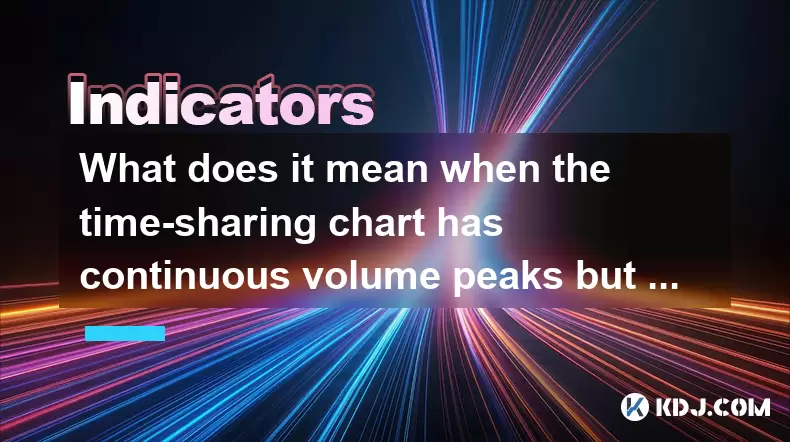-
 Bitcoin
Bitcoin $103,838.1703
5.33% -
 Ethereum
Ethereum $2,364.7328
10.94% -
 Tether USDt
Tether USDt $1.0007
0.03% -
 XRP
XRP $2.0950
9.02% -
 BNB
BNB $634.7170
5.25% -
 Solana
Solana $142.0264
11.70% -
 USDC
USDC $1.0000
0.00% -
 TRON
TRON $0.2728
5.18% -
 Dogecoin
Dogecoin $0.1598
10.80% -
 Cardano
Cardano $0.5655
9.94% -
 Hyperliquid
Hyperliquid $37.8554
11.16% -
 Sui
Sui $2.7196
17.77% -
 Bitcoin Cash
Bitcoin Cash $458.7795
4.67% -
 Chainlink
Chainlink $12.4271
12.53% -
 UNUS SED LEO
UNUS SED LEO $9.0769
0.74% -
 Avalanche
Avalanche $17.7117
12.43% -
 Stellar
Stellar $0.2392
9.83% -
 Toncoin
Toncoin $2.8765
9.58% -
 Shiba Inu
Shiba Inu $0.0...01131
11.69% -
 Litecoin
Litecoin $84.0378
9.79% -
 Hedera
Hedera $0.1456
14.65% -
 Monero
Monero $305.0298
5.16% -
 Ethena USDe
Ethena USDe $1.0006
0.03% -
 Dai
Dai $1.0001
0.02% -
 Polkadot
Polkadot $3.3522
10.31% -
 Bitget Token
Bitget Token $4.0785
3.25% -
 Uniswap
Uniswap $6.7682
13.08% -
 Pepe
Pepe $0.0...09557
13.29% -
 Pi
Pi $0.5253
9.79% -
 Aave
Aave $250.5247
16.65%
How long will it take for RSI to fall after the top divergence appears? Do you need to sell immediately?
Top divergence signals a bearish trend when an asset's price peaks but RSI doesn't, though the timing of RSI's decline can vary widely.
May 22, 2025 at 02:36 pm

Understanding RSI and Top Divergence
The Relative Strength Index (RSI) is a momentum oscillator that measures the speed and change of price movements. It is commonly used in the cryptocurrency market to identify overbought or oversold conditions. RSI values range from 0 to 100, with readings above 70 indicating overbought conditions and readings below 30 suggesting oversold conditions. Top divergence occurs when the price of an asset makes a higher high, but the RSI fails to make a corresponding higher high. This is often seen as a bearish signal, indicating that the upward momentum is weakening and a potential reversal might be on the horizon.
The Timing of RSI Decline Post Top Divergence
The time it takes for the RSI to fall after a top divergence appears can vary significantly based on several factors. These include the overall market sentiment, the specific cryptocurrency in question, and the presence of other technical indicators. In some cases, the RSI might start declining immediately after the divergence is identified, while in other situations, it might take days or even weeks for the RSI to reflect a significant downturn. It is crucial for traders to monitor the asset closely and not rely solely on the RSI for their trading decisions.
Factors Influencing RSI Decline
Several factors can influence how quickly the RSI declines after a top divergence is spotted. Market volatility plays a significant role; higher volatility can lead to faster changes in the RSI. Additionally, the volume of trades can impact the speed of the RSI's decline. If there is a high volume of selling pressure after the divergence, the RSI is likely to fall more quickly. Conversely, if the market remains relatively stable, the RSI might take longer to reflect the divergence.
Should You Sell Immediately After Top Divergence?
Whether to sell immediately after spotting a top divergence depends on various factors and should not be a knee-jerk reaction. It is essential to consider other technical indicators and market conditions before making a decision. For instance, if other indicators such as the Moving Average Convergence Divergence (MACD) or Bollinger Bands also suggest a bearish trend, it might be a good time to sell. However, if the broader market sentiment remains bullish, it might be worth waiting to see how the situation develops.
Implementing a Trading Strategy
When deciding whether to sell after observing a top divergence, it's beneficial to have a well-thought-out trading strategy. Here are some steps you can take:
- Monitor the RSI closely: Keep an eye on the RSI to see if it starts to decline after the divergence. Use tools like trading platforms or charting software to track the RSI in real-time.
- Analyze other indicators: Look at other technical indicators like MACD, Bollinger Bands, and volume to get a more comprehensive view of the market.
- Set stop-loss orders: If you decide to sell, consider setting a stop-loss order to limit potential losses if the market moves against your prediction.
- Stay informed about market news: Keep up-to-date with cryptocurrency news and market sentiment, as these can influence price movements.
Case Studies of RSI and Top Divergence
To better understand how RSI behaves after top divergence, let's look at a couple of case studies from the cryptocurrency market.
- Case Study 1: Bitcoin (BTC) in 2021: In early 2021, Bitcoin exhibited a top divergence on its daily chart. The RSI failed to reach a new high despite the price making a higher high. Within a week, the RSI began to decline, and the price followed suit, dropping significantly over the next month. This case demonstrates that the RSI can start declining relatively quickly after a top divergence, especially in a highly volatile market like Bitcoin.
- Case Study 2: Ethereum (ETH) in 2020: In mid-2020, Ethereum showed a top divergence on its weekly chart. However, it took nearly three weeks for the RSI to start declining noticeably, and the price took another month to reflect the bearish signal. This case highlights that the timing can vary significantly and underscores the importance of patience and thorough analysis.
Practical Tips for Using RSI and Top Divergence
Here are some practical tips for traders looking to use RSI and top divergence in their trading decisions:
- Use multiple timeframes: Analyze the RSI and top divergence on different timeframes (e.g., daily, weekly) to get a more holistic view of the market.
- Combine with other indicators: Never rely solely on RSI and top divergence. Use other indicators like MACD, Bollinger Bands, and volume to confirm signals.
- Backtest your strategy: Use historical data to backtest your strategy of using RSI and top divergence to see how it would have performed in the past.
- Stay disciplined: Stick to your trading plan and avoid making impulsive decisions based on a single indicator.
Frequently Asked Questions
Q1: Can RSI divergence be a false signal?
Yes, RSI divergence can sometimes be a false signal. It's crucial to confirm the divergence with other technical indicators and market conditions to increase the reliability of the signal.
Q2: How can I identify top divergence on a chart?
To identify top divergence, look for instances where the price of the asset makes a higher high, but the RSI does not make a corresponding higher high. This can be done using charting software that plots both the price and RSI on the same chart.
Q3: Is RSI more effective on certain cryptocurrencies?
RSI can be effective on all cryptocurrencies, but its effectiveness can vary based on the specific asset's volatility and trading volume. Highly volatile cryptocurrencies like Bitcoin and Ethereum might show more pronounced RSI movements.
Q4: What other indicators should I use alongside RSI to confirm a bearish signal?
Other indicators that can be used alongside RSI to confirm a bearish signal include MACD, Bollinger Bands, and volume. MACD can show bearish crossovers, Bollinger Bands can indicate price volatility and potential reversals, and volume can confirm the strength of the bearish move.
Disclaimer:info@kdj.com
The information provided is not trading advice. kdj.com does not assume any responsibility for any investments made based on the information provided in this article. Cryptocurrencies are highly volatile and it is highly recommended that you invest with caution after thorough research!
If you believe that the content used on this website infringes your copyright, please contact us immediately (info@kdj.com) and we will delete it promptly.
- Bitcoin Scaling Showdown: Lightning Network, Sztorc, and the Future of Payments
- 2025-06-24 04:25:12
- Cathie Wood, ARK Invest, and Circle Shares: A Wild Ride on the Stablecoin Wave
- 2025-06-24 04:25:12
- Download 2025: Live Review Through Martha's Lens
- 2025-06-24 04:32:10
- Turtle Club Joins Kaito Leaderboard: A New Era for Ecosystem Push
- 2025-06-24 04:35:12
- Crypto Penny Coins: Hunting for Monster Gains in 2025
- 2025-06-24 02:45:12
- Ethereum Whale Dips Into Crashing ETH: Smart Move?
- 2025-06-24 02:25:12
Related knowledge

How to interpret that the time-sharing chart shows "volume and price rise together" but the MACD red column shortens?
Jun 24,2025 at 01:08am
Understanding the Concept of 'Volume and Price Rise Together'In cryptocurrency trading, when a time-sharing chart shows that both volume and price rise together, it is typically interpreted as a sign of strong buying pressure. This means more traders are entering long positions, pushing the price higher while increasing the trading volume. This phenomen...

Is it contradictory that the moving average system is arranged in a bullish pattern but the DMI shows a decline in trend strength?
Jun 23,2025 at 11:43pm
Understanding the Moving Average and DMI RelationshipIn cryptocurrency trading, technical analysis plays a crucial role in identifying potential trends and making informed decisions. Two of the most commonly used indicators are the Moving Average (MA) and the Directional Movement Index (DMI). While both tools aim to provide insight into market direction...

How to interpret that the Williams indicator quickly turns back in the overbought area but does not fall below the 50-axis?
Jun 24,2025 at 02:01am
Understanding the Williams %R Indicator in Cryptocurrency TradingThe Williams %R indicator, often referred to as Williams Percent Range, is a momentum oscillator used by traders to identify overbought or oversold conditions in financial markets, including cryptocurrency. It ranges from 0 to -100, where values above -20 are considered overbought and thos...

What is the significance of the gap formed by the gap opening not being filled within five days?
Jun 23,2025 at 09:42pm
Understanding Gaps in Cryptocurrency TradingIn the world of cryptocurrency trading, a gap refers to a situation where the price of an asset jumps from one level to another without any trading activity occurring between those two levels. This often happens over weekends or holidays when the market is closed, and significant news or events occur that impa...

What does the narrowing of the Bollinger Band width to a historical low indicate?
Jun 24,2025 at 02:35am
Understanding Bollinger Bands and Their Role in Technical AnalysisBollinger Bands, developed by John Bollinger in the 1980s, are a popular technical analysis tool used to measure market volatility. They consist of three lines: a simple moving average (SMA) in the center, typically over a 20-period setting, and two outer bands that are set at a standard ...

What does it mean when the time-sharing chart has continuous volume peaks but the price fluctuation is not large?
Jun 24,2025 at 03:49am
Understanding the Time-Sharing Chart in Cryptocurrency TradingIn cryptocurrency trading, time-sharing charts are crucial tools that help traders monitor real-time price movements and volume activity. These charts display data within specific time intervals—such as 1-minute, 5-minute, or 15-minute windows—and allow for granular analysis of market behavio...

How to interpret that the time-sharing chart shows "volume and price rise together" but the MACD red column shortens?
Jun 24,2025 at 01:08am
Understanding the Concept of 'Volume and Price Rise Together'In cryptocurrency trading, when a time-sharing chart shows that both volume and price rise together, it is typically interpreted as a sign of strong buying pressure. This means more traders are entering long positions, pushing the price higher while increasing the trading volume. This phenomen...

Is it contradictory that the moving average system is arranged in a bullish pattern but the DMI shows a decline in trend strength?
Jun 23,2025 at 11:43pm
Understanding the Moving Average and DMI RelationshipIn cryptocurrency trading, technical analysis plays a crucial role in identifying potential trends and making informed decisions. Two of the most commonly used indicators are the Moving Average (MA) and the Directional Movement Index (DMI). While both tools aim to provide insight into market direction...

How to interpret that the Williams indicator quickly turns back in the overbought area but does not fall below the 50-axis?
Jun 24,2025 at 02:01am
Understanding the Williams %R Indicator in Cryptocurrency TradingThe Williams %R indicator, often referred to as Williams Percent Range, is a momentum oscillator used by traders to identify overbought or oversold conditions in financial markets, including cryptocurrency. It ranges from 0 to -100, where values above -20 are considered overbought and thos...

What is the significance of the gap formed by the gap opening not being filled within five days?
Jun 23,2025 at 09:42pm
Understanding Gaps in Cryptocurrency TradingIn the world of cryptocurrency trading, a gap refers to a situation where the price of an asset jumps from one level to another without any trading activity occurring between those two levels. This often happens over weekends or holidays when the market is closed, and significant news or events occur that impa...

What does the narrowing of the Bollinger Band width to a historical low indicate?
Jun 24,2025 at 02:35am
Understanding Bollinger Bands and Their Role in Technical AnalysisBollinger Bands, developed by John Bollinger in the 1980s, are a popular technical analysis tool used to measure market volatility. They consist of three lines: a simple moving average (SMA) in the center, typically over a 20-period setting, and two outer bands that are set at a standard ...

What does it mean when the time-sharing chart has continuous volume peaks but the price fluctuation is not large?
Jun 24,2025 at 03:49am
Understanding the Time-Sharing Chart in Cryptocurrency TradingIn cryptocurrency trading, time-sharing charts are crucial tools that help traders monitor real-time price movements and volume activity. These charts display data within specific time intervals—such as 1-minute, 5-minute, or 15-minute windows—and allow for granular analysis of market behavio...
See all articles
























































































